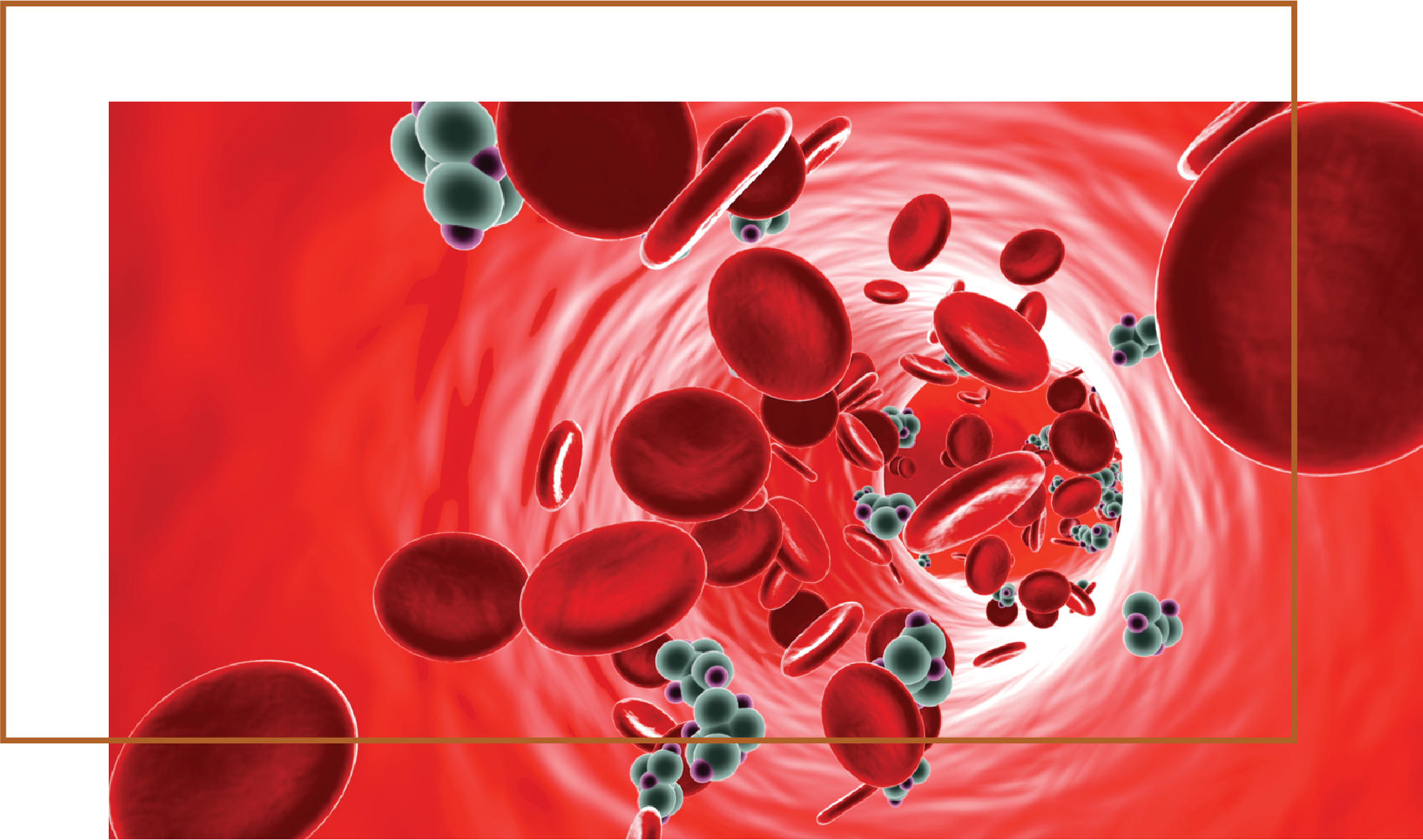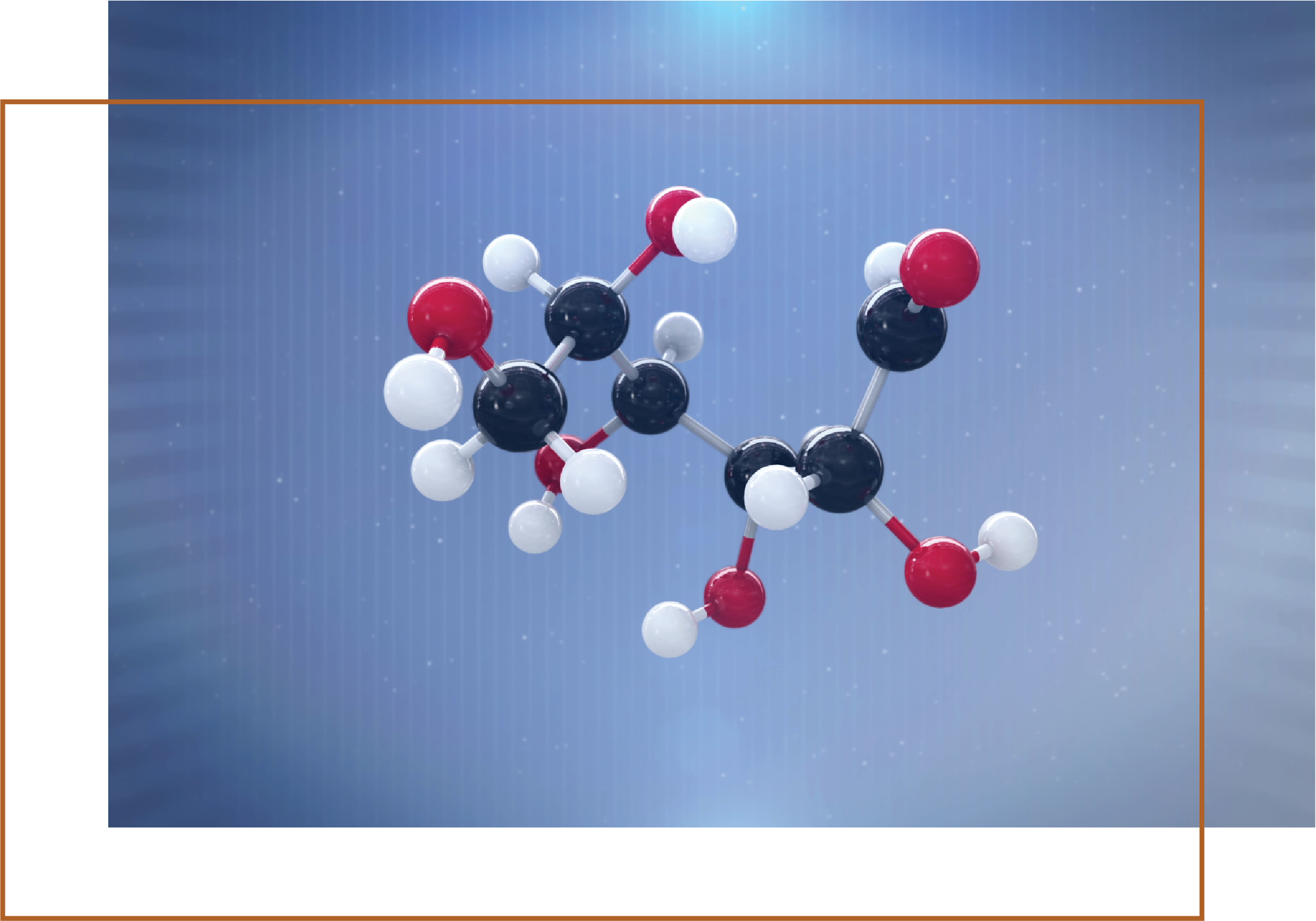GlucoGenic
Blood Sugar & Metabolism Support
This nutrigenomic formula supports healthy glucose and metabolic responses by supporting genes like GCG (the GLP-1 secretion gene), PPARG, ADIPOQ and others.
This nutrigenomic formula supports healthy glucose and metabolic responses by supporting genes like GCG (the GLP-1 secretion gene), PPARG, ADIPOQ and others.
For therapeutic results take 2 capsules a day with food, or as directed by your practitioner.
For maintenance continue with taking 1 capsule daily with food, or as directed by your practitioner.
**Individual needs may vary; please consult your practitioner before altering the prescribed doses or protocols.

GlucoGenic is a one-of-a-kind product designed to support glucose response and metabolism. It contains patented ingredients with years of research behind them. GlucoGenic works to aid the body’s integral glycemic and insulin responses, as well as overall metabolism, through its nutrimetabolomic and nutrigenomic ingredients.
Glucose is the body’s primary energy source. The way the body responds to the consumption of carbohydrates is tightly regulated by multiple organs, hormones, genes, and enzymes. In optimal conditions, when food containing glucose is consumed, it can then be absorbed into the bloodstream. The body is highly sensitive to changes in blood glucose levels; when an increase is detected, the pancreas is signaled to produce the hormone insulin. Insulin directs muscle, fat, and liver cells to absorb glucose from the bloodstream. This glucose can then be used for immediate energy, or stored for later use. As glucose is shuttled into cells, blood glucose levels drop, and the body signals the pancreas to stop producing insulin.

This process can become dysregulated over time. When this happens, muscle, fat, and liver cells don’t respond well to insulin and can’t remove as much glucose from the blood. This results in sustained high blood glucose levels, which prompts the pancreas to continue producing insulin; this is known as insulin resistance or impaired insulin sensitivity. Left unchecked, it can progress over time to develop into more serious conditions, like diabetes.
Glucose molecules can attach to hemoglobin, a component of red blood cells. The more glucose present in the bloodstream, the more glucose will be attached to hemoglobin. The average amount of glucose that is attached to hemoglobin can be measured in an A1C test. This test can inform an individual about how insulin insensitive their body is; the higher the number of the A1C test, the more insulin-resistant or less sensitive to insulin the body is.
GlucoGenic combines exclusive, researched ingredients to create a unique and effective product that optimizes insulin regulation and metabolism. These ingredients target genes and insulin-sensitive tissues to maintain the harmonious interplay of one of the body’s most important and integral functions.
Chronically high blood glucose levels lead to elevated A1C, prompting the pancreas to produce excess insulin. This can result in insulin resistance and eventually symptomatic cell and tissue injury. GlucoGenic helps to prevent or alleviate elevated blood glucose levels through its exclusive and natural ingredients, which support genes and enzymes responsible for regulating blood glucose levels.
Each time food is consumed, the body breaks it down into simpler molecules that can be utilized by the body. When carbohydrates are consumed, they are metabolized to glucose when possible and absorbed into the bloodstream. How quickly carbohydrates are metabolized and absorbed is known as glycemic response. Studies have shown that repeated sudden spikes in blood glucose levels are associated with developing insulin resistance over time. GlucoGenic helps slow the absorption of glucose to prevent this harsh influx of glucose into the blood.
Due to chronic exposure to high levels of glucose in the blood, cells can develop insulin resistance. Even if insulin is secreted in sufficient amounts, cells decrease their response to it and therefore can’t absorb as much glucose. This cycle can worsen overtime, leading to significant symptoms and tissue injury that require intervention. The unique ingredients in GlucoGenic prevent and reverse insulin sensitivity and support the pancreas in secreting appropriate amounts of insulin.
If insulin resistance and high blood glucose levels are left unchecked, drastic changes begin to take place in the body. Excess glucose is stored in the liver in the form of a large molecule called glycogen. Glycogen can be stored specifically in fat cells that accumulate throughout the liver, leading to inflammation, scarring, and liver injury. GlucoGenic protects the liver by modulating glucose and insulin response.
An orchestra of genes is required to promote proper glucose response and insulin secretion. The nutrigenomic ingredients in GlucoGenic promote the proper expression of these genes and the function of the proteins they code for. This formula was developed based on studied connections between these genes and the ingredients found in GlucoGenic.
GCG is the gene that codes for several peptide hormones. Certain genes can contain the code for more than one product, which can occur due to modifications made after the initial product is formed from reading the genetic code. In the case of the GCG gene, there are three main products. The first is glucagon, which has the opposite effect of insulin and is secreted by special α-cells in the pancreas. Its major function is to stimulate the breakdown of glycogen into glucose in the liver, which can then be released into the bloodstream. The second is glucagon-like peptide-1 (GLP-1) which is secreted by specialized cells in the intestine that helps with insulin secretion from the pancreas. The third is glucagon-like peptide-2, which is secreted mainly by endocrine cells lining the intestine, and its major function is to enhance nutrient absorption in the intestine.1–3
PPARG is a critical gene involved in many aspects of metabolism, energy homeostasis, and cellular health. It is responsible for increasing the insulin sensitivity of tissues, maturing fat cells so they can function correctly, immune system function, and because it has partial control over the life cycle of a cell, it exerts anticancer effects.4–6
ADIPOQ is a gene that encodes the protein adiponectin. Adiponectin is a protein secreted by fat tissue that increases the insulin sensitivity of other tissues in the body. Maintaining adequate levels of adiponectin protects against insulin resistance, endocrine disorders, excessive inflammation, and heart disease.7,8
SLC2 genes are a family of genes that encode 14 forms of glucose transport proteins. The purpose of glucose transport proteins is to facilitate a pathway for glucose to move through the cell membrane. Without these proteins, glucose would have no way to move from the bloodstream into cells to provide energy and participate in other essential cellular reactions.9
For therapeutic results take 2 capsules a day with food, or as directed by your practitioner.
For maintenance continue with taking 1 capsule daily with food, or as directed by your practitioner.
**Individual needs may vary; please consult your practitioner before altering the prescribed doses or protocols.**

Chromium is an essential micronutrient necessary for proper sugar and fat metabolism. Several versions of chromium have been developed for ease of absorption and cellular utilization. Chromium helps manage and prevent large spikes in blood sugar, which helps prevent chronic excessive levels of blood glucose and insulin resistance. Clinical trials suggest that supplementation with chromium picolinate can help reduce body weight.10,11
4-Hydroxyisoleucine is an amino acid present in plants, particularly in high concentration in fenugreek seeds. It can stimulate insulin secretion, improve glucose tolerance, and enhance the function of glucose transporters in cell membranes. It works synergistically with chromium supplementation to significantly improve insulin resistance.12
Zinc lipoate is a highly bioavailable form of zinc that is exclusive to Alimentum Labs. Zinc is a metal that is critical to health, playing a role in various functions, including functional metabolism. Zinc is involved in regulating insulin receptors, and our unique form ensures that all cells have adequate access to zinc.13,14
Indian Kino Tree, scientifically known as Pterocarpus marsupium, is a large tree that is native to India and the surrounding areas. It has been used for millennia for medicinal purposes due to its strong insulin-like properties.15
Fraxinus Ash, scientifically known as Fraxinus excelsior, has been shown to prevent harsh spikes in blood sugar after meals. Additionally, it may help manage or reverse symptoms associated with metabolic syndrome.16,17
Phlorizin is a compound isolated from plants, with high levels found in apple tree bark. Studies show that phlorizin supplementation reduces systemic inflammation, slows the development of non-alcoholic fatty liver disease, and stabilizes glucose, insulin, and glucagon levels.18
Hesperidin is a beneficial type of molecule called a flavonoid, which is present in high concentrations in citrus fruits. Hesperidin can interact with the ADIPOQ gene and can help prevent excessive accumulation of fat cells. It also possesses anti-inflammatory properties, which is crucial in managing insulin resistance.19
Polymethoxylated flavones are phytonutrients commonly found in citrus fruits with powerful antioxidant abilities. In addition to this, these phytonutrients can reduce blood glucose levels despite insulin resistance and can activate PPARGs to help increase insulin sensitivity.20,21
Benfotiamine is a specialized form of vitamin B1 that is fat-soluble. The higher the blood glucose levels, the more likely glucose molecules become bound to cells, proteins, fats, and more. This is called glycation. Excessive glycation is problematic, and benfotiamine is highly effective in reducing this, along with the symptoms associated with insulin resistance.22
D-biotin, also known as vitamin B7, has been studied in clinical trials and has shown a significant ability to reduce blood glucose levels.23
Vanadium is a metal that naturally occurs in the environment. Vanadium supplementation has been shown to improve blood glucose levels, insulin sensitivity, and A1C.24
Bitter melon is a fruit in the gourd family that grows in tropical regions of the world, such as parts of Asia, Africa, and the Caribbean. It has been used for thousands of years to treat various health conditions. Bitter melon has been shown to repair specialized pancreatic cells that secrete insulin, increase insulin sensitivity, and improve inflammation. It has also been shown to stimulate PPAR genes and GLP-1 receptors.25
Known in East Indian herbal medicine as “gurmur” or “sugar destroyer,” research shows this herb to be supportive of the body’s innate allergen-tolerance function, normal immune activities, lipid normalization, and glucose metabolic functions. It reduces sugar cravings with its ability to bind to sweet-tasting receptors on the tongue while also delaying the release of glucose into the bloodstream.26,27
Specific herbal varieties of this spice exhibit amazing support for the body’s natural blood sugar regulatory functions. It is well-known as an antioxidant and anti-inflammatory spice, helping maintain normal blood lipids and sugars already within normal ranges.28
Mulberry leaves have been used in traditional medicines for various heart-health related conditions. Long-term insulin resistance and high A1C can damage both large and small blood vessels, leading to cellular stress and death throughout the body. Mulberry has been shown to alleviate these complications and aid in preventing their development in the first place.29
Ginger is one of the most widely used spices in the world and has been used for millennia in the treatment of various health conditions. It stimulates the release of insulin and increases the insulin sensitivity of tissues. Additionally, it improves the metabolism of carbohydrates and fats, as well as lipid and glucose blood profiles.30
Angelica sinensis, also known as female ginseng, supports the body’s innate abilities to maintain normal levels of lipids and sugars. It protects the liver from injury caused by excessive glucose in the blood, inflammation, and scarring related to insulin resistance. Additionally, it can prevent the damage and death of specialized insulin-secretion cells in the pancreas.31,32
Naringin is a flavonoid compound found in grapefruit that studies associate with nourishing metabolic and energy processes. It provides antioxidant support, which contributes to its ability to protect against kidney and liver injury.33,34
This is a fat-soluble form of vitamin C. Studies show the consumption of ascorbyl palmitate may help slow the digestion of starches, which slows the release of glucose into the bloodstream. This can help prevent large spikes in blood glucose, which are associated with insulin resistance.35
When used as directed there are no known contraindications for GlucoGenic.
**It is always recommended that you consult your practitioner prior to adding any new supplement to your regimen if you are pregnant, breastfeeding, experiencing renal failure, undergoing an organ transplant(s), managing diabetes with insulin, or are taking medication(s) for any pre-existing conditions**
All ingredients are tested before use for: